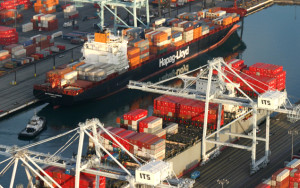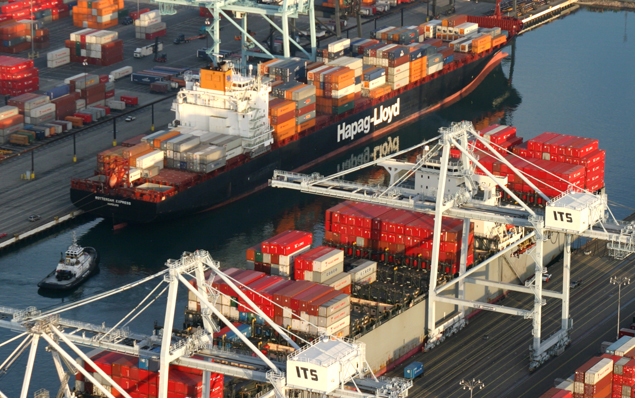 Both the ports of Long Beach and Los Angeles on the U.S. West Coast (USWC) reported a surge in cargo volumes in March, even as the Federal Maritime Commission (FMC) said it has approved an agreement among terminal operators and equipment managers to collaborate with stakeholders in making the West Coast ports more efficient.
Both the ports of Long Beach and Los Angeles on the U.S. West Coast (USWC) reported a surge in cargo volumes in March, even as the Federal Maritime Commission (FMC) said it has approved an agreement among terminal operators and equipment managers to collaborate with stakeholders in making the West Coast ports more efficient.
The Port of Long Beach saw a 32% increase in cargo traffic to 630,084 TEUs (twenty-foot equivalent units) year-over-year, making it the busiest March in the port’s history.
Imports were recorded at 317,520 TEUs, a 42.1% increase, while exports decreased 17.3% to 127,337 TEUs.
Empty containers increased 85.4% to 185,227 TEUs. As the months-long congestion eased in March, a great deal of empty containers were waiting to be shipped overseas to be refilled with goods, explained a port statement.
Additionally, March 2015 became the busiest month for containerized cargo since August 2013. Despite the strong month, cargo at the Port of Long Beach is down 3.3% for the first three months of the year, compared to the same period in 2014.
The port attributed the increase to the easing of congestion after terminal operators and dockworkers agreed to a tentative contract settlement at the end of February. At the same time a new system to pool the chassis that truckers use to haul cargo was launched to ease equipment shortages. The port is also undertaking a US$4-billion program to modernize its facilities.
Long Beach volumes take huge leap
Meanwhile in Long Beach, March containerized cargo throughput also increased, rising 17.3% compared to the same period last year. The port handled a total of 791,863 TEUs, the second highest month in its history. The busiest single month was October 2006, when the port moved 800,063 TEUs.
For the first three months of 2015, overall volumes are down 5% to 1,823,854 TEUs compared to the same period in 2014.
‘March container volumes were robust as our terminals worked aggressively to clear out the backlog of vessels,” said Port of Los Angeles executive director Gene Seroka. “The number of ships waiting at anchor has reduced significantly, labor levels are strong and our container terminals are extremely active. We continue to work on a series of initiatives to improve efficiencies throughout the supply chain.”
Imports increased 31.5% to 430,898 TEUs in March year-over-year, but exports declined 22.5 percent to 145,536 TEUs.
Combined, total loaded imports and exports increased 11.86% to 576,434 TEUs in March 2015. Factoring in empties, which increased 34.7%, overall March 2015 volumes improved 17.3% to 791,863 TEUs.
FMC clears way for West Coast terminals’ collaboration
In related news, the U.S. maritime regulator FMC said it has voted unanimously to allow the Pacific Ports Operational Improvements Agreement to become effective on April 17, 2015.
The approval will authorize the Ocean Carrier Equipment Management Association, the West Coast Marine Terminal Operators Agreement, and almost every vessel-operating carrier and marine terminal operator serving U.S. West Coast ports to discuss and exchange information, and reach an agreement on measures to improve efficiency of operations at U.S. West Coast ports to reduce congestion.
But FMC, while lauding the agreement, said it will nonetheless check diligently the parties’ activities to ensure the cooperation does not impact negatively on transport costs or quality of transportation service.
“While the agreement has great potential to achieve this goal, the Commission will closely monitor the activities of the agreement to identify emerging 6(g) concerns and act quickly should it become necessary,” said FMC Chairman Mario Cordero.
“As the primary gateways for trade between the U.S. and Asia, the ports along the U.S. Pacific Coast play an important role in ensuring the efficient flow of goods in and out of the United States,” he added. “This agreement is an example of supply chain participants cooperating and working together under the authority of the Shipping Act to improve port productivity, innovation, and efficiency.”





